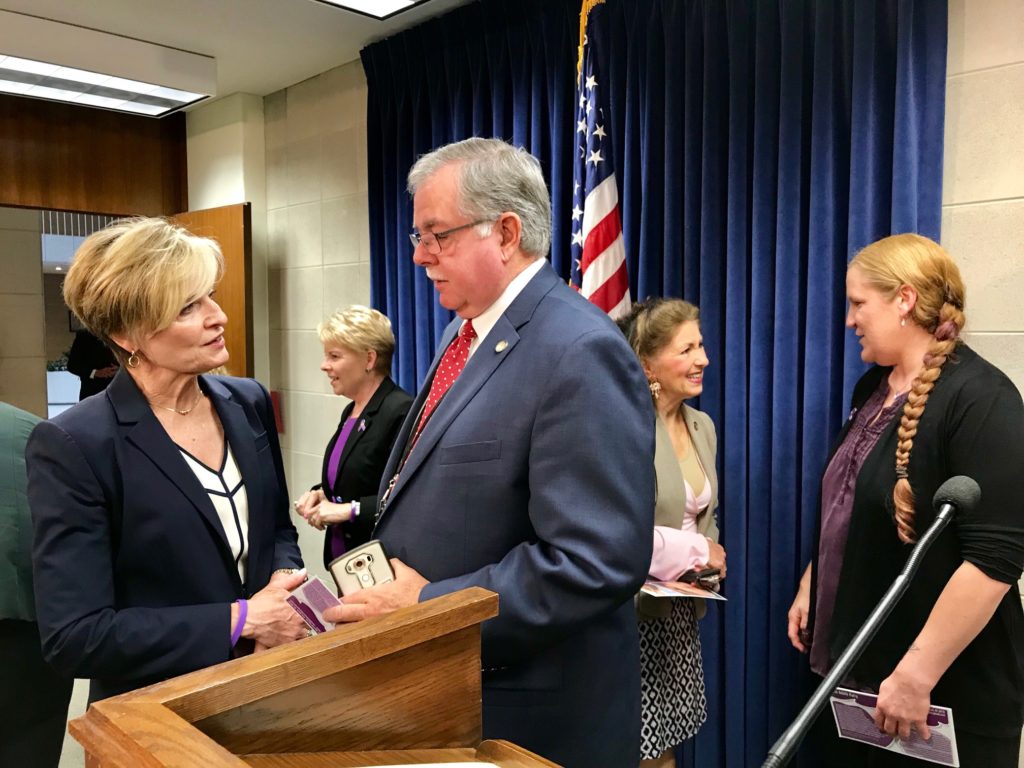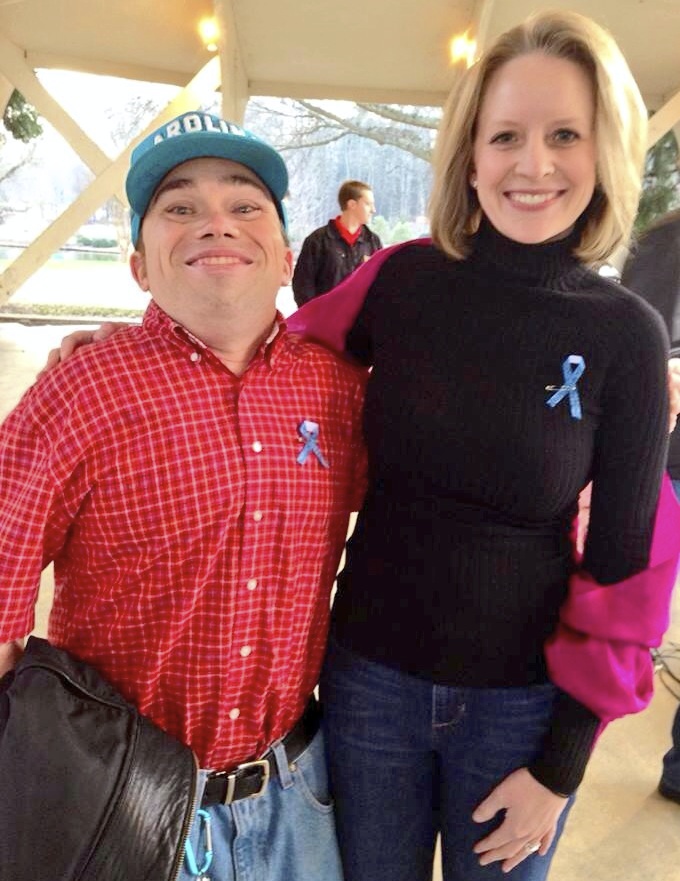On May 30, North Carolina leaders announced the expansion of the state’s newborn screening panel to include three rare diseases — Pompe disease, Mucopolysaccharidosis type 1 (MPS 1) and X-linked Adrenoleukodystropy (X-ALD). These same leaders are also committed to improving the process for adding conditions to the program in the future. Because of my role with Taylor’s Tale, I had an opportunity to attend the press conference in Raleigh. Here’s my take on the news as well as the importance of newborn screening programs.
Why is newborn screening important?
Soon after birth, babies are screened for different diseases to ensure that, if needed, they receive early treatment and the best possible quality of life. This, in turn, saves families from much heartache and potentially a huge financial burden.
I graduated from the University of Georgia in May after spending my senior year as a Child Life Specialist intern at the Children’s Hospital of Georgia, where I worked with children and families in a hospital setting. This means I saw, firsthand, the difference this bill will make for babies born in North Carolina.
Imagine a family having to sacrifice their first child to a rare disease in order to understand what’s wrong so that their future children can be tested and treated for that same disease. It sounds awful, but it’s a painful reality: many parents have multiple children born with a particular rare disease, and they are forced to watch one (or sometimes more than one) son or daughter suffer while younger children receive treatment and live a longer, healthier life.
Imagine being a parent in that situation and knowing the medical community could have done something to help your child, if your child had only been screened for the disease early. To boot, the financial burden of your oldest child’s condition could become long and protracted if they need more advanced treatment as their condition declines and the damage becomes irreversible.
Imagine knowing that all of it could have been easily avoided and changed.
That’s where newborn screening comes into play.
With this move, fewer children and families in North Carolina will suffer from lack of early and appropriate treatment. Families will have more time to get to know each other, do meaningful activities together and watch their children grow, so they can make meaningful contributions to a society that allowed them to live.
Everyone stands to benefit here: the child, the family, our healthcare system and our society.
How did the press conference in North Carolina unfold?
We arrived at the state capitol and headed into a room inside the legislative building, where white coats packed into one side of the room and patients and families filled the other. The middle of the room was reserved for press. I stood with Sharon King, Taylor’s Tale president and Taylor’s mother, and Judy Mayer, a Taylor’s Tale board member, to watch the morning unfold.
Legislators spoke about newborn screening and their excitement for the addition of these three conditions. This is a happy day, they said — for children, for families and for the state of North Carolina. It doesn’t just affect our state, they said. It will set a new precedent for the way we treat newborns and hopefully create a ripple effect across other states. Another mother of a child with a rare disease also came to the podium to share her experience. While her child received treatment, this mother stressed that it would have been much better if it had happened even a few months earlier.
Despite the excitement around the news, it isn’t without detractors. For example, some members of the media questioned the cost of adding conditions to the newborn screening panel. Wouldn’t this raise the price tag of newborn screening for mothers? Wouldn’t additional screenings require more expensive equipment? What would taxpayers think? How many babies do some of these diseases really affect? What are the numbers? Is it worth it?
This is where I believe it’s important to focus on the big picture. After all, many rare diseases are chronic illnesses that cost a lot of money to treat over the long haul in addition to causing a great deal of pain and suffering for patients and families. Catching these diseases early, so that patients can receive meaningful treatment, is far less costly than dealing with the diseases later. Remember, too, that rare diseases as a whole are far from rare. In fact, in North Carolina alone there are approximately one million rare disease patients.
I look forward to watching this crucial work move forward and feel lucky to have witnessed such a big day. However, I know there we still have a lot to do in order to help the public comprehend and see the big picture. The press conference was a crash course in rare disease advocacy, and more than ever, I understand why we can’t ever give up the fight. I look forward to sharing more from my experiences this summer and hope you’ll join Taylor’s Tale, and me, for the ride.


